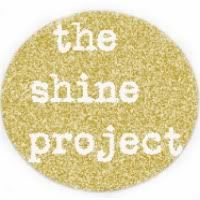I've been looking for some new ideas of good meals and snacks for Sara. I found this article at Pampers.com and thought it was very useful. Hopefully you think so too!
Snack Time: Feeding Your Toddler
By: Suzanne Dixon, M.D., M.P.H.
Read Biography Learn About The Pampers Parenting Network
Now that your baby is eating solid foods, you're on the spot to come up with healthy meals and snacks. Young children need to eat five or six times a day, so the snacks should really be called mini-meals. This needn't be as hard as it sounds. Healthy snacks are easy to come by once you know what to look for.
Foods to Avoid- Certain foods are notorious choking hazards for children this age. They include:
Hot dogs (unless cut into bits, such as quarters lengthwise before being sliced)
Whole grapes, whole cherry tomatoes
Hard candies, including jelly beans
Nuts
Popcorn
Raw carrots, celery, green beans, or any hard vegetable
Seeds (such as pumpkin seeds or sunflower seeds)
Large chunks of any food such as meat or potatoes
Large chunks of peanut butter — always use the creamy kind, and spread it thinly onto a cracker or toast. Offer this food starting at 18 months. Never give a heaping spoonful of peanut butter to a toddler.
Year 1: Your 1-year-old doesn't seem to eat anything anymore, as his appetite and rate of growth have decreased. All the more reason to tempt him with tasty, healthy snacks. Babies this age are ready for "finger foods."
Eggs are a good source of balanced nutrition. Babies can use the extra iron in egg yolks. Some babies may be allergic to egg whites, though, so watch carefully for any reaction. Scrambled eggs are a delicious, non-chokable option all day long. Don't worry about the cholesterol — babies need more than you do. Three or four eggs a week are fine. Mini omelets cut in squares and strips are easy to handle.
Fresh fruits are better than just fruit juice. While fruit juice is mainly sugar, fruits themselves are great sources of vitamins and other nutrients. Give your child small slices of fresh, juicy peach — or delicious, squishy bananas — and see how long he can resist!
Applesauce is another clever way to get fruit into your child. Be ready for a mess, since your child will see it as a finger food.
String cheese or small cubes of cheese are a good way to give your child calcium if he doesn't like milk or even if he does. Cottage cheese is also a favorite; again, be ready for a mess!
Carrots and green beans, cooked and diced, make a tasty snack. No whole peas, please.
Potatoes, cooked and diced, do the trick. Watch out for the French-fry habit — too many, too greasy, and too salty.
18 Months: At his age, your toddler needs two or three nutritious snacks a day in addition to meals. Try these:
Unsalted pretzels
Ripe bananas — either cut into pieces or offered whole (more fun for him, more mess for you.)
Toast — the ultimate toddler food. Try spreading it with a thin coating of creamy peanut butter or cream cheese to give it more nutritional wallop.
String cheese, slices of American cheese, cubes of cheddar — whatever works. If you find a cheese your toddler likes, let him have it.
Smooth peanut butter and crackers are usually a hit. Spread the peanut butter thinly, however, to prevent your child from choking.
Unsweetened cereal bits — stick some in a cup for an afternoon snack. Part of the appeal for a toddler is picking them up one by one.
Unsalted rice cakes — big and fun for little hands to hold. These crunchy snacks melt in his mouth. They're even better if you thinly spread them with cream cheese or creamy peanut butter.
Plain bagels — These are a wonderful vehicle for healthy snacking. Cut them into manageable bits or just in half to gnaw on. Add cream cheese, melted and cooled cheese, or fruit puree.
2 Years: Watch your child's diet to make sure he's getting enough important nutrients such as iron, calcium, B vitamins, and protein. With his picky appetite these days, it's hard to know whether he's getting what he needs every day. Here are some nutrient-packed foods that make great, munchable snacks for your tot.
Scrambled eggs, hard-boiled eggs — these are a great source of iron and protein. Make mini-omelets and cut them into bite-sized pieces.
String cheese sticks, cheese slices and cubes — a clever way of getting your tot to eat his calcium and protein.
Fish sticks — a dinner favorite and good source of calcium. Combine with yummy mashed potatoes for carbohydrates, and you've got a meal!
Unsalted bread sticks, unsalted rice cakes, toast — any grain product is a good source of B vitamins, and toddlers generally go for their relative blandness. Try spreading half a bagel with a bit of cream cheese for a healthy combination that's high in protein and carbohydrates
Apple slices, peach slices, plums, orange slices — you can't go wrong with fresh fruit
Dried fruit — cut into bits — and raisins. Make sure you remove the pits from any prunes or dates you use. Toddlers will love picking minced dried fruit out of their favorite cup.
"Little trees" — steamed pieces of broccoli and cauliflower, stood upright in mashed potatoes. If introduced early, these can become favorite snacks.
Mini-pizzas — Use half of an English muffin or bagel, spread with tomato sauce, top with cheese, and put it in the oven to melt. Cool and serve, and hear him say "Mama mia!"
3 Years: With his many daytime activities and growing imagination, your 3-year-old is busy around the clock, making good nutrition more important than ever.
Scrambled eggs, hard-boiled eggs — great source of iron and protein. Make mini-omelets and cut them into bite sized pieces.
String cheese sticks, cheese slices and cubes — these are a clever way of getting your tot to eat his calcium and protein.
Mini pizzas — Use half of an English muffin or bagel, spread with tomato sauce, top with cheese, and put it in the oven to melt. Cool and serve.
Fish sticks — a dinner favorite and good source of calcium. Combine with yummy mashed potatoes for carbohydrates, and you've got a meal!
Unsalted bread sticks, unsalted rice cakes, toast — any grain product is a good source of B vitamins, and toddlers generally go for their relative blandness. Try spreading half a bagel with a bit of cream cheese for a healthy combination that's high in protein and carbohydrates.
Apple slices, peach slices, plums, orange slices — you can't go wrong with fresh fruit.
Dried fruit — cut into bits. Make sure you remove the pits from any prunes or dates you use. Toddlers will love picking minced dried fruit out of their favorite cup.
Fruit smoothies are hits at this age. Add a straw, and you've got a soda fountain special.
"Little trees" — steamed pieces of broccoli and cauliflower. If introduced early, these vegetables can become favorite snacks.
Tuna fish and salmon — mix either with yogurt to make it spreadable and create delicious, nutritious sandwiches.
Breads — bran muffins, corn bread, and banana bread, made with honey and whole grain, are healthier than the store-bought kind. Make a batch, freeze, and defrost for a special but quick snack.
Cookies — choose fig-filled or oatmeal varieties rather than the other sugar types.
Now that your child is a pre-schooler, here are some general guidelines for feeding him: Choose snacks that are high in complex carbohydrates, such as bread, breadsticks, bagels, muffins, crackers, and pasta salads. To make them even more nutritious, add a little protein and fat, such as cream cheese or smooth peanut butter
Any snack that your child can help make is much more likely to be consumed. Put him to work!
Avoid the many snacks marketed to kids that are high in salt, fat, and sugar. Carefully read labels on food products, even those made especially for small children. Try to get a sense of how much salt or fat your child consumes in a day. A quarter of his recommended daily intake of salt, for example, is too much for one snack
At 3, your child needs fewer fats and fatty acids than he did before. Ask your health care provider if he is ready to start drinking low-fat milk.
Dairy products are important, but don't overdo it. Your child needs 16 to 24 ounces of milk (or dairy products such as yogurt or cheese) per day for strong bones and growth. But more than 24 ounces could cause your child to lose his appetite for other foods containing important nutrients milk doesn't have.
Breakfast cereal is likely to become a staple. It's a good choice for a meal or a snack as long as you choose a cereal without too much added sugar.
3 weeks ago







2 comments:
That was helpful. I just scanned through Marley's age but, it's nice to get new ideas.
We are still on baby food and beast milk.
Post a Comment